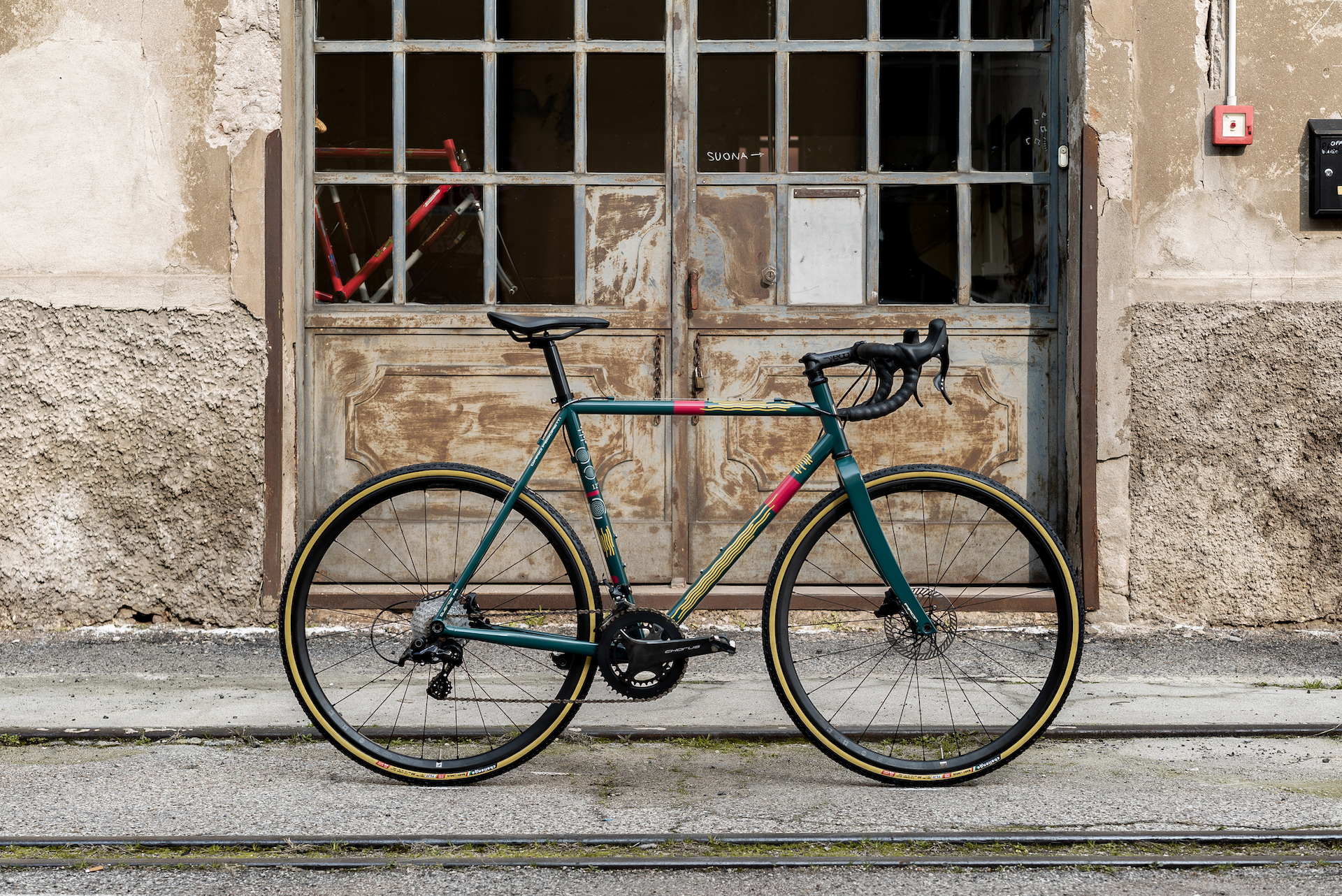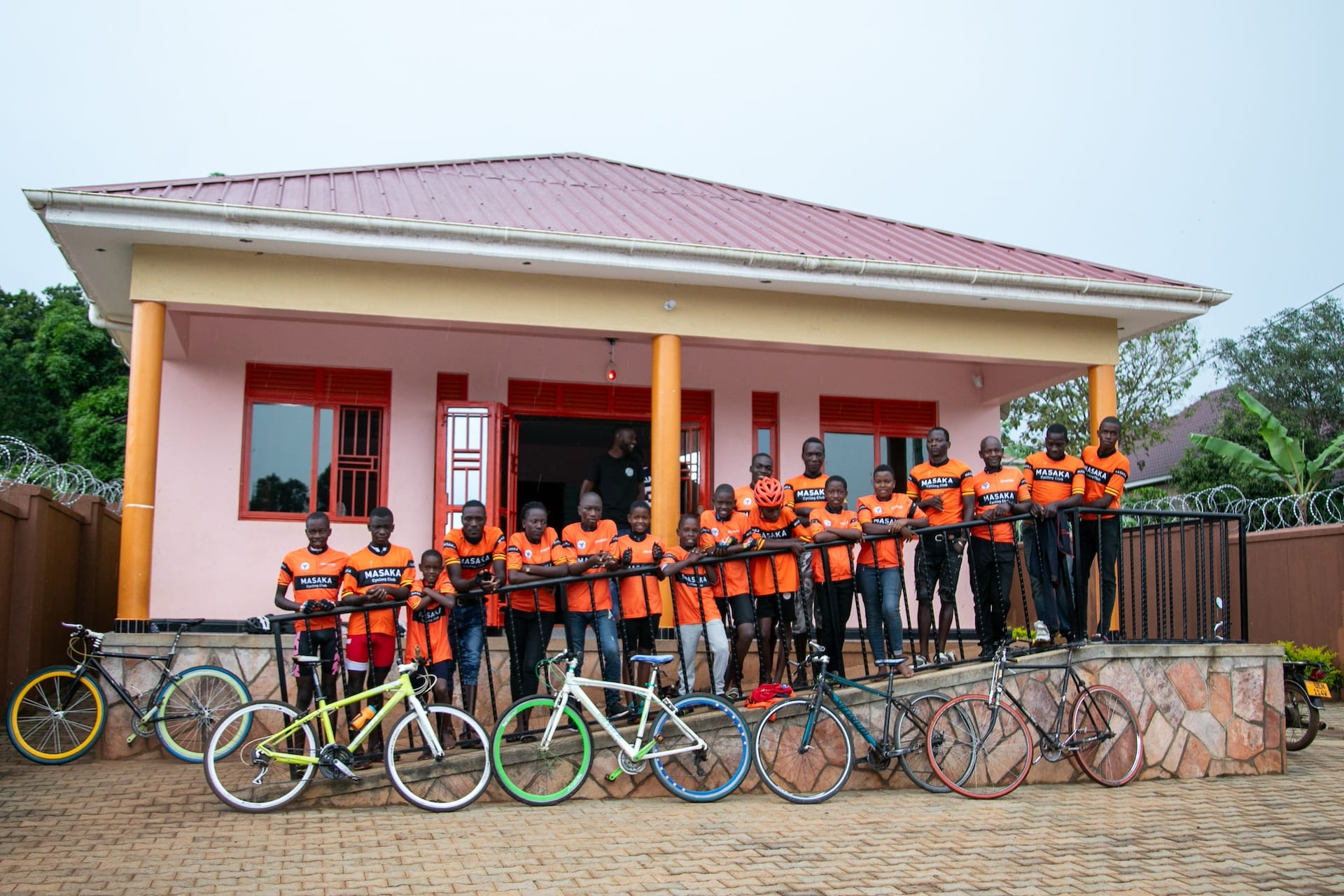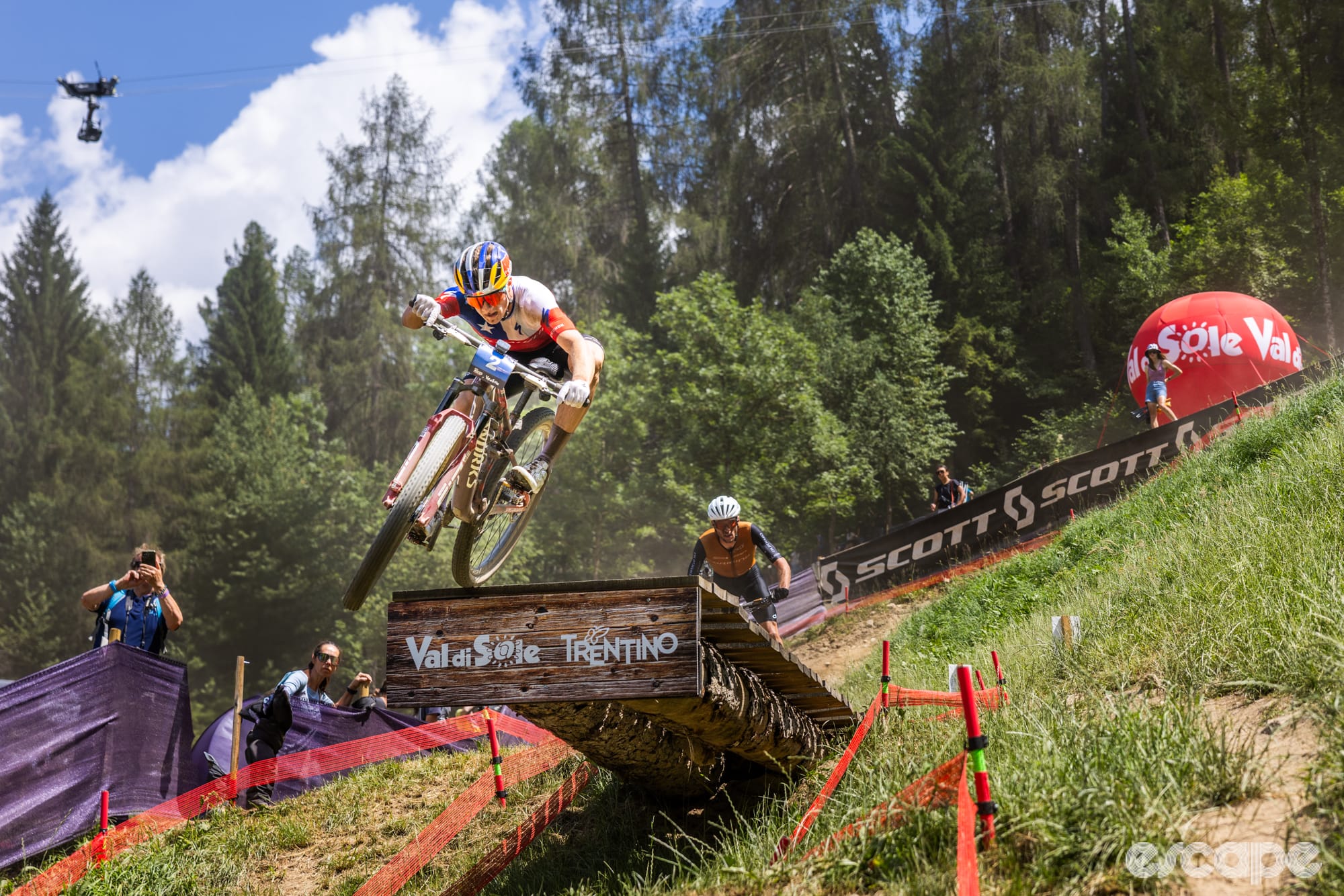At the 2019 North American Handmade Bike Show, the Dario Pegoretti booth featured a handful of frames but just two complete bicycles, both traditional steel, rim-brake models. One was a tan Mxxxxxo with burgundy circles evoking a wine-stained tablecloth. A placard in front read “Per te, Dario.” At the other end of the space stood a Responsorium in stark black and red, with white panels slashed by what looked like charcoal. The placard there read “Siamo Noi Adesso,” or “It’s us now.”
That phrase crystallized what was then – just months after Dario’s sudden and unexpected death from cardiac arrest – the existential challenge for the small bottega: for a brand that had been so closely, eponymously tied to its founder and charismatic frontman, how would it survive his loss? What was Pegoretti without Dario?
The answer to what Pegoretti was without Dario was that Pegoretti had not been just Dario for a long time. And thanks largely to the steady leadership of Pietro Pietricola, Dario’s longtime shop partner and master framebuilder himself, and Cristina Wurdig, an industry executive and Dario's close friend who took on the general manager role, the shop did survive. Pegoretti was “us,” all of them.
But once past those destabilizing initial months and the fright of the COVID-19 pandemic, which struck northern Italy faster and more ferociously than almost anywhere else, a further challenge loomed: how to honor Dario and what he built, while keeping it current.
Even in 2019, disc brakes were becoming widespread in road bikes, while the 25 mm tires on the bikes in the booth looked thinner than ever. When I wrote about Pegoretti’s future for Bicycling magazine that year, the custom titanium framebuilder and Dario’s longtime friend, Darren Crisp, observed that his mystique – as a longtime “builder of trust” for pro riders and teams, he built the last steel bike to win the Tour de France – had insulated Dario somewhat from market forces. “Dario could make decisions other builders couldn’t,” Crisp told me then. “I couldn’t make rim brake-only bikes.”
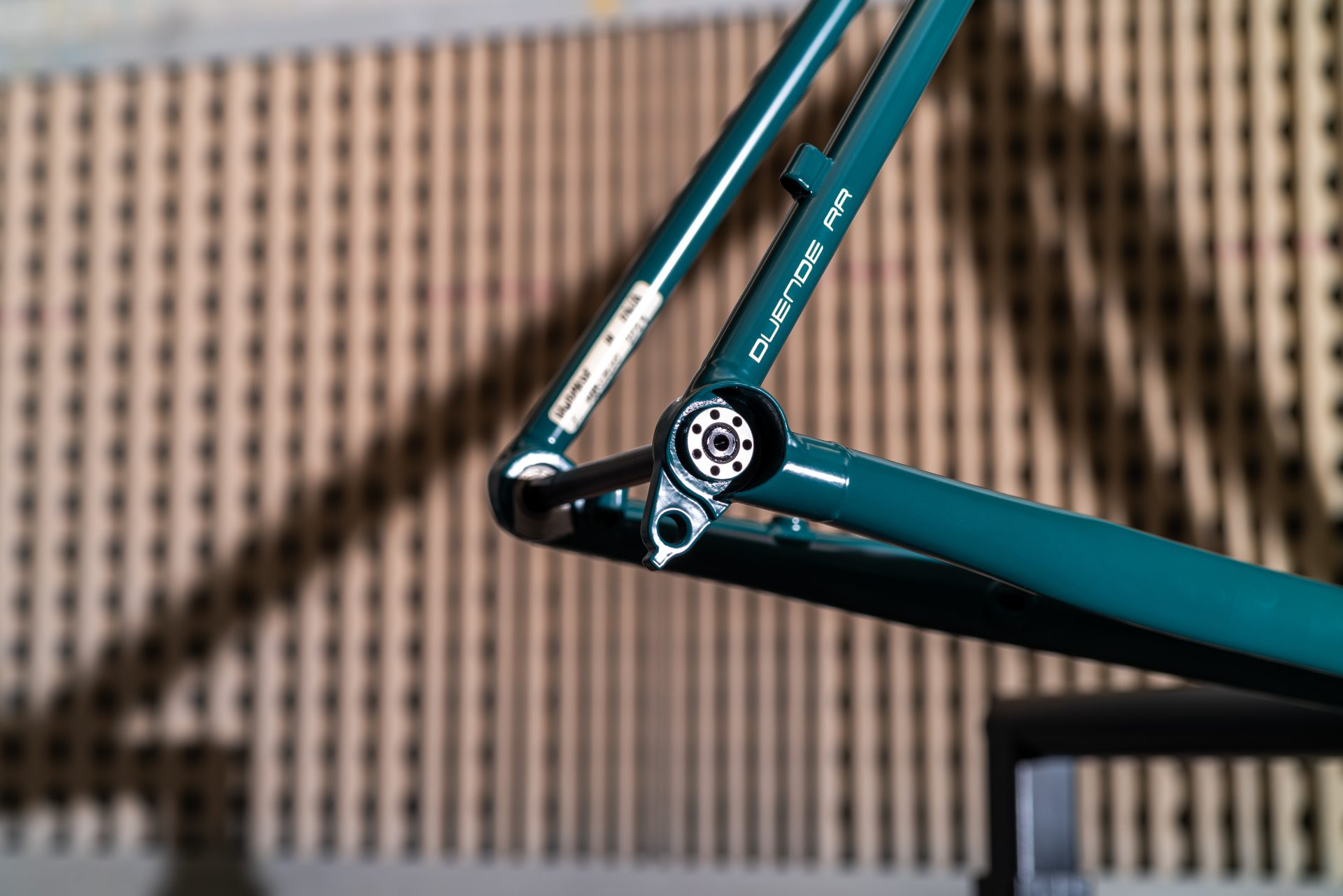
Eventually, neither could Pegoretti, and had Dario lived he would have faced that decision himself. Instead, Pietro and Cristina and the others made it, and others. “The first couple of years, we had to pay attention to the critics of the officina,” says Wurdig. “But after a while, we think that, yes, it is important to respect the past, think about the man we knew and loved. But he would not stay still, because he was a man to look ahead.”
Disc versions of several models, and a new one, a stiffer incarnation of the Responsorium’s stainless steel Columbus XCR tubing, called the Round, were the first incremental steps to keep the brand from becoming ossified, vintage. The latest one is bolder. But don’t call it a gravel bike.
Pegoretti conspicuously does not use that word to describe the new Duende Rock & Roll, instead calling it an “all-surface" bike. And a peek at the geometry and tire clearance definitely underlines that this is no slacked-out drop-bar hardtail. With trail figures close to that of a road bike, and clearance for up to 40 mm tires, the Duende R&R is pretty clearly built to shine most on faster surfaces, be they paved or no. In that sense, it’s a close cousin to something like Allied’s Echo.
But the world is not full of steel all-road framesets that retail for several thousands of dollars. And from the traditionalists who might buy such things, Pegoretti may attract criticism; the new Piron fork that Pietricola designed was the big challenge, he says, partly for how it fit with the rest of the frame. As viewed from the side, it fits the slender Columbus XCR steel frame tubing dimensions beautifully, but a frontal perspective shows its chonky side, which it needs for stiffness. And of course there might be the perception that Pegoretti is trend-chasing the gravel boom. That would miss the fact that the brand long offered the Duende as a cyclocross version back in the cantilever brake days, but it’s an easy leap to make.
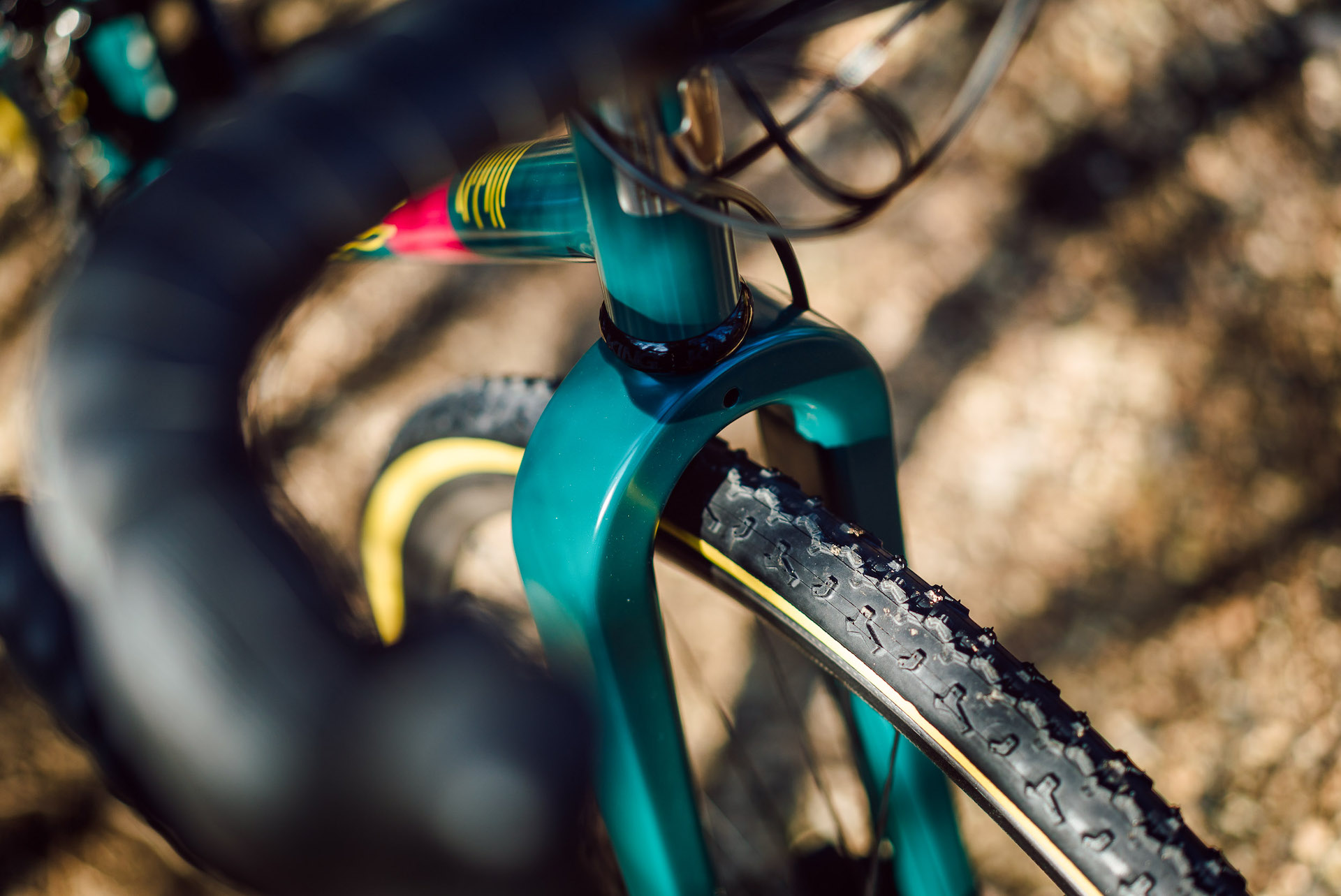
Wurdig says that Pegoretti was acutely conscious of this in the development phase. “We don’t want to be trapped in any mistakes, chasing the market if it goes in some direction, just for the sake of selling something,” she says. But at heart of the matter is a similar question that Moots confronted with its Express, as both are longtime heritage brands with ardent groups of owners. How does Pegoretti balance what its existing devotees want it to be with room to expand – a bit; we’re not talking about an e-bike here like Moots launched – to find new ones? What’s the right balance?
That is a tough question, which everyone will answer differently, in an “I know it when I see it” kind of way. The Express, to me, felt like too much of a departure from Moots' heritage. To shift from an all-titanium lineup to now include carbon fiber, from pedal-powered only to e-bike, felt like too large a leap in one go. (And it didn’t help that the industrial design cues on the Express are diametrically opposite to those found on Moots’ other drop-bar offerings.)
I am fortunate to have a rim-brake Duende in my own fleet, a purchase foolishly made during the height of the 2008-2009 financial crisis. It’s a fantastic bicycle, with proven, reliable, no-fuss technology, especially when I finally get this new aluminum-rimmed wheelset built (metal FTW). But with a max tire clearance of barely 28 mm – the seatstay brake bridge bears the scars of my experimentation – it’s grown slightly out of step with most of my riding these days. Don’t get me wrong: I do ride it on dirt, because it’s quite capable and Dario intended his bikes to be ridden, not babied. But a man has limits to what he will inflict on an heirloom road bike.
The Duende Rock & Roll, Wurdig says, came partly from customer requests of people very much like me, people “who love riding their Pegoretti on the road, but they say it is getting more dangerous. And they enjoy a little bit of dirt, but they have a different bike for gravel. ‘If you could fill that gap for me, I would love that,’ they say.”
If I were buying a Pegoretti today (I am not, nor tomorrow), the Rock & Roll would not be my pick. I do have a nice gravel bike for rougher terrain, and I also am fortunate to have some lovely smoother dirt roads and trails nearby, so a Responsorium or Round, with their 32 mm tire clearance in disc-brake versions, would more suitably fit those rides. (If the R&R itself appeals but not the stock paint, know that Pegoretti has many other options.) But the Rock & Roll feels like a reasonable extension from those bikes. I can imagine others see it differently; they might feel like the brand has stretched too far, or they might simply want it to stay what it was.
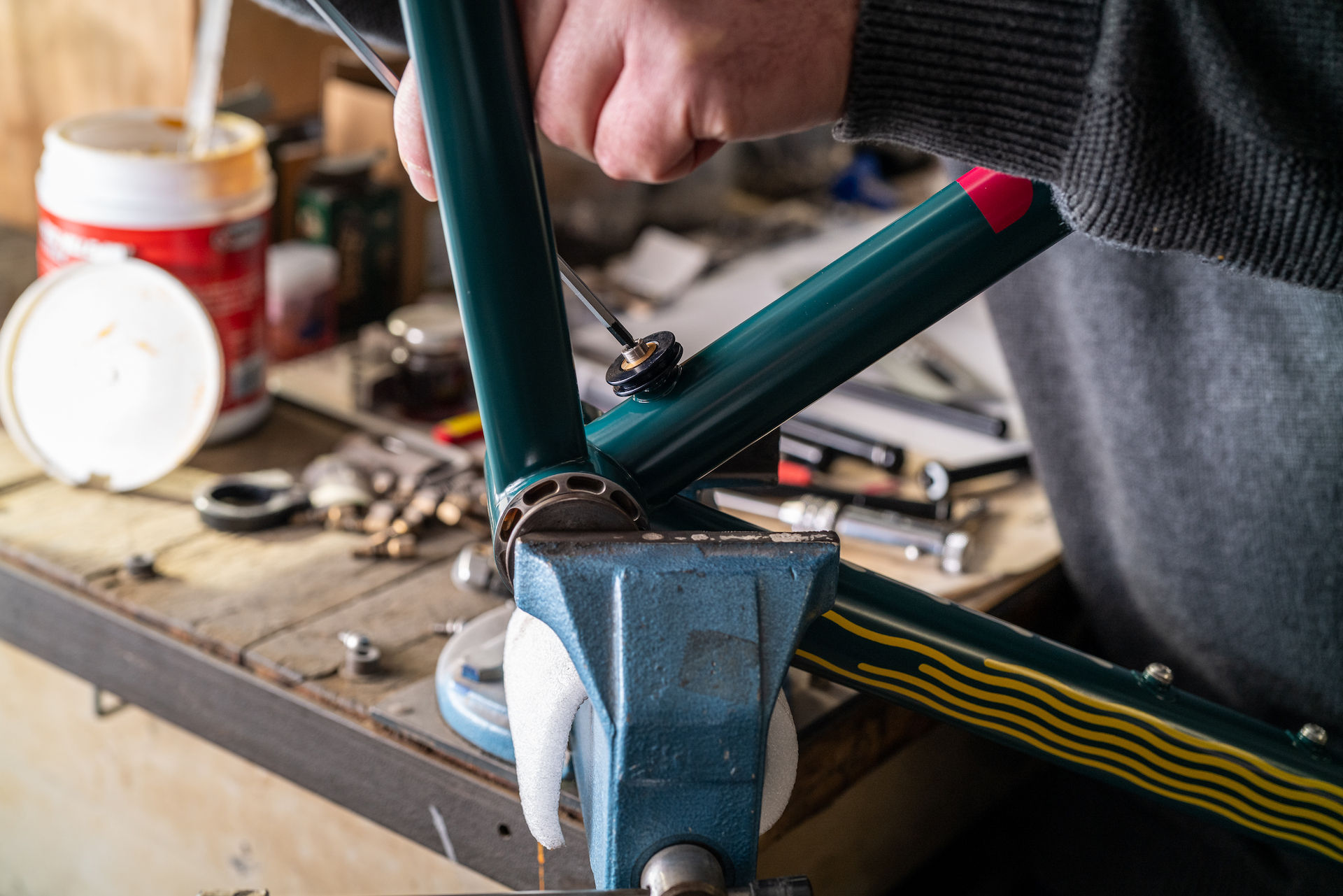
But all of us, even Dario Pegoretti, must evolve to stay alive. Not literally, but in the sense that our spirit does not curdle and shrink. We must seek out new experiences, new ways of seeing and interacting with the world and let them expand into us, fill and fulfill us, while staying true to who we are. “For the brand to stay alive, you cannot just respect the past,” says Wurdig. “You also need to give it new oxygen.”
As Wurdig says, Dario was never a guy who stood still, who savored tradition solely for its own sake. It’s impossible to know what he would have done were he still alive and at the head of the brand. But it’s not fair to what Pegoretti is now for that to be the standard, not anymore. What is fair is to expect Dario’s survivors to try to nurture it. As Cristina said, she and Pietro are not young anymore, and they are stewards of the officina, “only one chapter in this adventure,” as Pietricola puts it. “We have a team of very good young people, three together with us.” He and Wurdig look at them, in their 30s mostly, and say, “Guys, we don’t have children. This is up to you in the future; we’re just writing a few chapters of the book.”
Back in 2019, Pietro told me that keeping the shop open in the immediate days following Dario’s death had helped the team cope with the shock of his sudden loss. And as the days grew to weeks and months, it became almost talismanic for them to keep it that way. “If the workshop dies and closes, for us Dario really dies,” he said then. Keep moving forward, was the message. There’s a profound wisdom in that, because trying to keep Pegoretti as a heritage or nostalgia brand, to preserve it in amber, would have been the very thing that ensured its demise.
Did we do a good job with this story?

